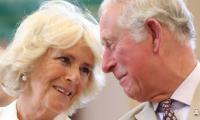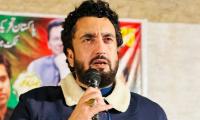Afghanistan Diary
Daesh continues to target Shias; Taliban challenge Dostum
PESHAWAR: The Wolesi Jirga, or National Assembly, has demanded immediate implementation of the peace agreement that the Afghan government signed with Gulbaddin Hekmatyar’s Hezb-i-Islami (HIA) on September 28.
During the recent session of the assembly, some lawmakers said delay in implementing the agreement would create problems and provide time to its opponents to make it fail. Two weeks have already passed since the signing of the agreement, but it is unclear what steps have been taken to start implementing it. One of the much-awaited steps would be the arrival of Hekmatyar in Kabul and his meetings with President Ashraf Ghani and CEO Dr Abdullah and arrangements for his stay in the city. It seems this won’t happen until his name and those of his colleagues are removed by the US from the list of wanted men and prisoners belonging to the HIA are released.
As at least two factions of the HIA led by Abdul Hadi Arghandiwal and Waheedullah Sabaon are already part of the Afghan government, they would be making every effort to facilitate Hekmatyar’s return home from Pakistan and get the peace agreement implemented.
Meanwhile, there has been no report about any violation of the ceasefire that came into force after the signing of the peace agreement. Disarmament of HIA fighters will take place once the general amnesty promised to them becomes effective. There is no timeline for accomplishing all these terms of the agreement.
The real military strength of the HIA isn’t known but there is consensus that it doesn’t have many fighters or any area under its total control. According to HIA officials, their fighters are active in 22 provinces of the country. Most HIA fighters became inactive or joined the government or the Taliban. Over the past one decade HIA claimed responsibility for attacks on Afghan and foreign forces in Kunar, Wardak, Logar, Baghlan, Kunduz, Nangarhar, Kapisa, Laghman and Kabul provinces.
The HIA has no existence on the ground in Helmand, Uruzgan, Zabul, Faryab, Herat, Badghis, Takhar, Badakhshan, Balkh, Samangan, Jauzjan and other provinces.The HIA mostly claimed responsibility for attacks on foreign forces. Since 2014, it has claimed responsibility of only one attack in Kabul. It was conducted on foreign forces in Shah Shaheed area and had also caused casualties to Afghan civilians.
In Baghlan, the HIA has a strong commander, Mirwais, who has been fighting in Markazi Baghlan district and had recently occupied a coalmine. Though Kunduz is the native province of Hekmatyar, he has lost support there and one of his effective military commanders, Karimullah, has joined the Taliban in Khanabad district.
In Kunar province, Hekmatyar’s long-time ally, Kashmir Khan fought for years under his banner in Shigal district. He became inactive when he was old but stayed loyal to Hekmatyar. He recently died after a long illness.
The Islamic State, or Daesh, claimed responsibility for the two terrorist attacks, including one which was suicide bombing, at Shiite places of worship in Kabul in which more than 20 mourners were killed and 54 were wounded. It hasn’t claimed responsibility for the suicide attack on Shiite mourners in Mazar-i-Sharif in which 16 persons were killed and another 50 were wounded.
Taliban have denied their involvement in the bombings at the Shiite places of worship in Kabul and Mazar-i-Sharif on the occasion of Ashura (10th of the month of Moharram). Taliban had also issued a denial when a Shiite mosque was attacked last year or when a procession of Shiites in Kabul protesting the change of an electricity transmission route was targetted by a suicide bomber.
Dozens of Shias were killed in these previous attacks for which Daesh had claimed responsibility. Suspicion immediately fell on Daesh after the recent attacks on Shiite places of worship and mourning processions as the group is avowedly anti-Shia and has a history of targetting the Shiites all over the Islamic world.
Daesh doesn’t have physical presence in Kabul, but it could have sent its members from its stronghold in the eastern Nangarhar province to launch attacks in the Afghan capital. If the IS had a role in the sectarian attacks on the Shiites in Mazar-i-Sharif in northern Afghanistan, this would be the first time that it struck in a place far removed from its stronghold in eastern Afghanistan. Daesh seems keen to fuel sectarian strife and ethnic divisions in Afghanistan.
The Afghan Shiites, who are mostly from the Hazara ethnic group, constitute about 10 percent of the population. They live in Kabul, central, western and northern Afghanistan and have gradually gained political and economic power due to their higher level of education after being oppressed for years by the Pashtuns and Tajiks.
Afghanistan’s First Vice President General Abdul Rasheed Dostum, who was recently injured in a Taliban ambush, is confronted with another challenge from the Taliban in northern Afghanistan. Taliban captured Ghormach district in Faryab province bordering Turkmenistan and Dostum after consultations with President Ashraf Ghani rushed to the area to mobilize his forces against the Taliban. Apart from his native Jaujzan province, Faryab and Saripul provinces also are considered Dostum’s strongholds and he believes it his duty to fight the Taliban or any other force trying to snatch his possessions. In fact, Dostum had earlier announced he was going to Kunduz to fight the Taliban fighters, but his plans changed when Ghormach also fell to the Taliban.
Thrice in the recent past, Dostum led his militia and Afghan troops to push back the Taliban threatening towns in Jauzjan, Faryab and Saripul but the Taliban fighters returned and regained control of places captured by Dostum’s forces as soon as the Uzbek warlord left. The battle for Ghormach could follow the familiar pattern with Taliban retreating once Dostum’s men arrive and then trying to reclaim it when Dostum is gone. This pattern has been seen in most provinces, including Kunduz, Takhar, Badakhshan, Jauzjan, Faryab, Saripul, Helmand, etc.
Justice Tariq Mehmood Jahangiri took up Sher Afzal bail plea for hearing
CCP’s announcement made, stating that applicants are required to pay money upfront in order to enroll
According to details, the police took a van filled with female students of medical college to a police station on...
In this image, the logo of the Nowshera Press Club can be seen. — Facebook/Nowshera Press Club/FileNOWSHERA: The...
Senator Sherry Rehman said the PPP had previously extended an offer to the PTI to form a government, but the PTI is...
A division bench comprising Justice Shakeel Ahmad and Justice Dr Khurshid Iqbal heard the petition filed by the KP...







